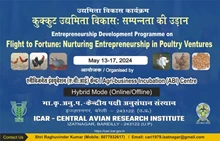
Traditional farming techniques based on naturally occurring biological processes are combined with contemporary technology and scientific knowledge of ecology in organic farming systems. The study of organic farming practices is known as agroecology. Organic farmers are constrained by legislation to use only natural pesticides and fertilizers, while conventional farmers utilize synthetic insecticides and water-soluble synthetically refined fertilizers.
Crop rotation, green manures and compost, biological pest management, and mechanical cultivation are the main techniques used in organic farming. These practices make use of the environment's natural elements to increase agricultural productivity. Legumes are planted to fix nitrogen into the soil, natural insect predators are supported, crops are rotated to confuse pests and renew soil, and natural substances like potassium bicarbonate and mulches are used to control weeds and disease.
Here are some commonly used organic pest and disease management strategies in Indian agriculture:
-
Crop rotation: Rotating crops can help break pest and disease cycles. By alternating different crops in a field, pests and diseases that are specific to certain crops can be minimized or eliminated.
-
Biological control: This method involves using natural enemies of pests to control their populations. Beneficial insects, such as ladybugs and lacewings, can be introduced into the fields to prey on pests. Similarly, certain microorganisms like Bacillus thuringiensis (Bt) can be used to control specific pests.
-
Botanical pesticides: Various plant-based products, such as neem oil, garlic, and chilli extracts, have insecticidal properties and can be used as natural pesticides. These botanicals disrupt pests' feeding and breeding habits and act as repellents or toxins.
-
Trap crops: Planting specific crops that attract pests away from the main crop can help reduce damage. The trap crops are more susceptible to pests and can be regularly monitored and treated to prevent the pests from spreading to the main crop.
-
Cultural practices: Implementing cultural practices can help manage pests and diseases. These practices include timely planting, proper spacing of crops, maintaining good soil health, removing infected plant parts, and practicing good hygiene in the field.
-
Integrated Pest Management (IPM): IPM combines different pest management strategies to minimize the use of pesticides while maximizing crop protection. It involves monitoring pests, using thresholds to determine when action is necessary, and implementing a combination of cultural, biological, and chemical control methods.
-
Organic fertilizers and soil amendments: Maintaining healthy soil with the use of organic fertilizers and soil amendments helps strengthen plants and make them less susceptible to diseases and pests. Compost, green manure, and biofertilizers can improve soil fertility and enhance plant resistance.
-
Education and awareness: Training and educating farmers about organic farming practices, including pest and disease management, can play a crucial role in their successful adoption. Knowledge-sharing programs, workshops, and demonstrations can empower farmers to make informed decisions and effectively implement organic pest and disease management techniques.
It's important to note that organic pest and disease management requires careful observation, regular monitoring, and timely intervention to be effective. Farmers should also consider local ecological conditions and consult with agricultural experts or organic farming organizations for specific guidance tailored to their regions and crops.











